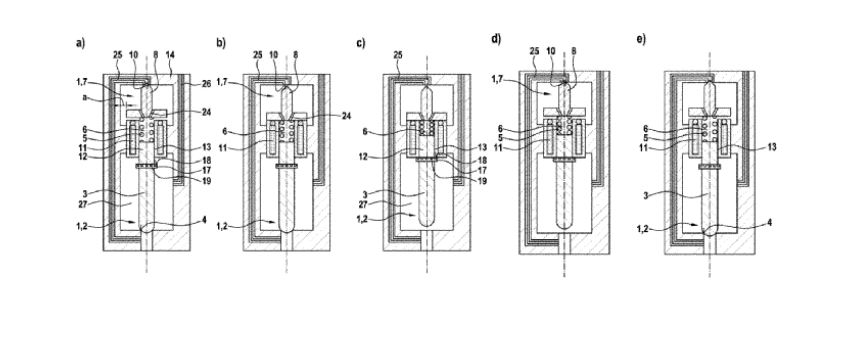The patent describes an innovative shut-off valve designed for use in hydrogen tank systems. This shut-off valve addresses the need for efficient control and safety in hydrogen storage, a crucial component in hydrogen-powered vehicles and energy storage solutions.
Key Components of the Shut-off Valve
The shut-off valve comprises several key components that contribute to its functionality. At the heart of the system is a main valve equipped with a liftable main valve piston. This piston delimits a control chamber at one end while interacting with a main valve seat at the other. A spring exerts force on the piston in the direction of the main valve seat, ensuring reliable operation.
Control Valve Mechanism
A critical aspect of the shut-off valve is its control valve, responsible for managing the lifting movements of the main valve piston. The control valve incorporates a control valve plunger situated axially and co-axially relative to the main valve piston. This plunger is also influenced by the spring force, or an additional spring, directing it toward a control valve seat. This mechanism allows for precise management of gas flow through the valve.
Role of the Annular Solenoid Coil
Enhancing the efficiency of the control valve is an annular solenoid coil. This component not only actuates the control valve but also influences the end portion of the main valve piston, designed as a solenoid plunger. Through electromagnetic actuation, this solenoid coil ensures swift response times and enhances the reliability of the system.
Integration in Hydrogen Tank Systems
The patent also notes the incorporation of the shut-off valve within hydrogen tank systems. By integrating this valve, the systems benefit from enhanced safety and operational efficiency, critical for applications in hydrogen energy storage and hydrogen-powered vehicles.
The Significance of the Invention
While the technology is cutting-edge, it represents a focused innovation aimed at addressing specific challenges in the hydrogen storage industry. By delivering robust and precise control over hydrogen flow, the shut-off valve ensures safer and more efficient storage solutions, contributing to the wider adoption of hydrogen as a clean energy resource.
https://patentscope.wipo.int/search/en/detail.jsf?docId=US447599146
